
RESTful API Essentials: Design, Security, and Best Practices

The architecture of modern web applications rests fundamentally on RESTful APIs, which have become the universal language for system-to-system communication across the internet. From social media platforms to cryptocurrency exchanges, RESTful APIs enable seamless data exchange, service integration, and application functionality that powers our digital economy. Understanding how RESTful APIs work, mastering design patterns, implementing robust security controls, and optimizing performance separates competent developers from exceptional ones, particularly in demanding environments like cryptocurrency platforms where reliability, security, and speed determine success.
How RESTful APIs Work: Fundamental Mechanics
RESTful APIs operate on the foundation of HTTP protocol, leveraging its methods, status codes, and headers to create predictable, standardized interfaces for accessing and manipulating resources. When a client application needs to interact with a server, it constructs an HTTP request specifying the desired operation through the HTTP method, the target resource through the URL, any necessary data in the request body, and authentication credentials in headers. The server processes this request, performs the requested operation, and returns an HTTP response containing a status code indicating success or failure along with any requested data or error information.
The stateless nature of REST means each request contains complete information needed for processing, without relying on server-stored session data. This architectural constraint enables servers to treat each request independently, facilitating horizontal scaling where additional servers can be added to handle increased load without complex session synchronization. For cryptocurrency APIs serving global markets with millions of users querying market data, executing trades, and analyzing blockchain information, statelessness becomes essential for achieving the scale and reliability that financial applications demand.
Resource-oriented design distinguishes RESTful APIs from RPC-style interfaces by treating everything as a resource accessible through unique identifiers. In cryptocurrency APIs, resources include digital assets, market prices, blockchain transactions, trading orders, user portfolios, and analytical indicators. Each resource has a canonical URL representing it, such as /api/v1/cryptocurrencies/bitcoin for Bitcoin's information or /api/v1/users/12345/portfolio for a specific user's portfolio. Operations on these resources use standard HTTP methods where GET retrieves resource representations, POST creates new resources, PUT updates existing resources completely, PATCH modifies specific resource attributes, and DELETE removes resources.
Content negotiation allows clients and servers to agree on data formats through Accept and Content-Type headers. While JSON has become the dominant format for RESTful APIs due to its balance of human readability and machine parsability, APIs might support XML, YAML, or custom formats for specific use cases. Token Metrics delivers comprehensive cryptocurrency analytics through RESTful APIs that provide consistent JSON responses, enabling developers to integrate sophisticated market intelligence, AI-powered predictions, and blockchain data into their applications using familiar, standardized interfaces.
Essential Design Patterns for RESTful APIs
URI design patterns create intuitive, discoverable APIs where developers can predict endpoint structures without extensive documentation. Hierarchical URIs represent resource relationships naturally, with parent resources appearing earlier in paths and child resources later. A cryptocurrency portfolio API might expose /api/v1/users/{userId}/portfolios/{portfolioId}/holdings/{holdingId} representing the logical hierarchy from users to their portfolios to individual holdings. Consistent naming conventions using plural nouns for collections and singular identifiers for specific resources create predictable patterns across all endpoints.
Filtering, sorting, and pagination patterns enable clients to work with large datasets efficiently without overwhelming networks or systems. Query parameters provide flexible mechanisms for refining resource collections, with parameters like ?symbol=BTC&timeframe=24h&sort=volume_desc&limit=50 enabling precise data requests. For cryptocurrency market data APIs returning thousands of trading pairs or blockchain transactions, supporting comprehensive filtering and sorting ensures clients retrieve exactly the data they need. Cursor-based pagination provides stable results even as underlying data changes, critical for crypto APIs where new transactions and price updates arrive continuously.
HATEOAS, or Hypermedia as the Engine of Application State, embeds links within responses that guide clients through available operations and related resources. Rather than hardcoding endpoint URLs, clients follow links provided in responses to discover capabilities dynamically. While full HATEOAS implementation remains rare due to complexity, incorporating relevant links in responses improves API usability. For example, a cryptocurrency API response might include links to related resources like historical data, trading pairs, or detailed analytics, enabling intuitive navigation through available information.
Versioning patterns enable API evolution without breaking existing clients. URI versioning embeds version identifiers in endpoint paths like /api/v1/ or /api/v2/, providing explicit clarity about which API version clients access. Header-based versioning uses custom headers to specify versions, keeping URIs clean but reducing discoverability. For cryptocurrency APIs where trading bots and automated systems depend on consistent interfaces, clear versioning with generous support windows for old versions prevents disruption to critical financial systems. Token Metrics maintains well-defined API versioning, allowing clients to upgrade at their own pace while accessing new features as they become available.
Error response patterns provide consistent, informative feedback when operations fail. Comprehensive error responses include appropriate HTTP status codes, machine-readable error codes for programmatic handling, human-readable messages describing the problem, and actionable guidance for resolution. For crypto trading APIs, distinguishing between client errors like invalid order parameters and server errors like temporary exchange connectivity issues enables appropriate error recovery strategies. Structured error responses using standard formats facilitate consistent error handling across client applications.
Security Controls for Production APIs
Transport layer security through HTTPS encryption protects data in transit, preventing eavesdropping and man-in-the-middle attacks. All production RESTful APIs must enforce HTTPS, rejecting plain HTTP connections that could expose sensitive data. For cryptocurrency APIs transmitting trading credentials, portfolio information, and transaction details, HTTPS becomes absolutely non-negotiable as even momentary exposure could enable theft or fraud. Implementing HTTP Strict Transport Security headers instructs browsers to always use HTTPS for subsequent connections, further strengthening transport security.
Authentication mechanisms verify client identity before granting API access. Token-based authentication using JSON Web Tokens provides stateless authentication suitable for RESTful architectures, with tokens containing claims about user identity and permissions. API key authentication offers simpler alternatives for server-to-server communication, with unique keys identifying each client application. OAuth 2.0 frameworks enable sophisticated authorization flows where users grant limited access to third-party applications without sharing primary credentials. Token Metrics implements enterprise-grade authentication across its cryptocurrency API, supporting multiple authentication methods appropriate for different client types from mobile applications to institutional trading systems.
Authorization enforcement ensures authenticated clients access only resources and operations they're permitted to use. Role-based access control assigns permissions based on user roles, while attribute-based access control evaluates permissions based on request context including resource ownership, user attributes, and environmental factors. For crypto APIs, authorization might permit users to view their own portfolios but not others', execute trades within their account limits, and access analytics features corresponding to their subscription tier. Fine-grained authorization at the API level creates security boundaries protecting sensitive operations regardless of client-side controls.
Input validation and sanitization defend against injection attacks and malformed data that could compromise backend systems. Every request parameter, header, and body field should be validated against expected types, formats, and ranges before processing. For cryptocurrency APIs, validation ensures trading amounts don't exceed precision limits, wallet addresses conform to proper checksums, date ranges fall within acceptable bounds, and cryptocurrency symbols match known assets. Comprehensive validation prevents malicious inputs from exploiting vulnerabilities in backend services or databases.
Rate limiting and throttling protect APIs from abuse while ensuring fair resource allocation. Implementing tiered rate limits based on authentication level enables providing generous limits to paying customers while constraining free-tier usage. For cryptocurrency market data APIs, rate limiting prevents individual users from monopolizing infrastructure while enabling legitimate high-frequency use cases through appropriate paid tiers. Token Metrics offers carefully designed rate limits across multiple subscription tiers, balancing accessibility for individual developers with the sustainability needed to maintain high-quality infrastructure serving institutional clients.
Performance Tuning and Optimization
Database query optimization forms the foundation of API performance since database operations typically dominate request processing time. Proper indexing ensures queries execute quickly even as data volumes grow, with indexes on frequently queried fields, foreign keys, and filter conditions. Query result caching stores computed results for reuse across multiple requests, particularly valuable for crypto APIs where complex analytics might be requested repeatedly. Connection pooling maintains reusable database connections, eliminating connection establishment overhead that would otherwise impact high-throughput APIs.
Response caching at multiple levels dramatically improves API performance. Application-level caching stores computed results in memory caches like Redis, serving subsequent requests without repeating expensive operations. For cryptocurrency price data that changes by the second, aggressive caching with short TTLs balances freshness with performance. HTTP caching through Cache-Control headers enables client-side and CDN caching, with cache duration varying by resource type. Historical market data might cache for hours while current prices cache for seconds, optimizing each resource type appropriately.
Payload optimization reduces response sizes through field filtering, partial responses, and compression. Supporting field selection parameters like ?fields=symbol,price,volume allows clients to request only needed data, reducing bandwidth and parsing time. Response compression using gzip or brotli reduces transmission sizes by 70-90 percent for JSON responses. For cryptocurrency APIs returning large datasets like complete order books or comprehensive market statistics, payload optimization significantly improves performance especially for mobile clients or regions with limited bandwidth.
Asynchronous processing offloads time-consuming operations from synchronous request-response flows. Rather than making clients wait for lengthy computations, APIs can accept requests, return job identifiers immediately, and notify clients when processing completes through webhooks or polling endpoints. For crypto analytics requiring intensive calculations across historical data, asynchronous patterns maintain API responsiveness while enabling sophisticated processing. Token Metrics leverages asynchronous processing for compute-intensive AI predictions and analytical reports, providing immediate acknowledgment while delivering results as they become available.
Connection optimization including HTTP/2 adoption, connection keep-alive, and efficient connection pooling reduces network overhead. HTTP/2's multiplexing enables multiple concurrent requests over single connections, eliminating connection overhead for clients making many requests. For cryptocurrency applications querying multiple endpoints to build comprehensive market views, HTTP/2 significantly improves performance. Proper keep-alive configuration maintains connections across requests, avoiding repeated connection establishment costs.
Testing Strategies for RESTful APIs
Unit testing validates individual API endpoint behaviors in isolation, verifying request parsing, business logic execution, and response formatting. Mock objects simulate dependencies like databases and external services, enabling fast test execution without infrastructure dependencies. For cryptocurrency APIs, unit tests verify that price calculations, trading validations, and analytics computations produce correct results across various inputs and edge cases. Comprehensive unit test coverage catches regressions early and enables confident refactoring.
Integration testing validates APIs working with actual dependencies including databases, message queues, and external services. These tests verify data flows correctly through the full stack, errors propagate appropriately, and integrations handle failures gracefully. For crypto APIs aggregating data from multiple blockchain networks and exchanges, integration tests ensure synchronization mechanisms, conflict resolution, and failover behaviors function correctly. Testing with realistic data volumes reveals performance issues before production deployment.
Contract testing ensures APIs maintain compatibility with consuming applications, catching breaking changes before they impact production. Consumer-driven contracts encode client expectations about request formats and response structures, with both API providers and consumers validating against shared contracts. For cryptocurrency APIs supporting diverse clients from mobile apps to trading bots, contract testing prevents regressions that could break existing integrations. Automated contract testing in CI/CD pipelines catches compatibility issues immediately.
Performance testing validates APIs meet response time and throughput requirements under various load conditions. Load tests simulate realistic user traffic patterns, stress tests push systems beyond expected capacity, and soak tests validate sustained operation over extended periods. For crypto trading APIs experiencing dramatic traffic spikes during market volatility, performance testing ensures systems handle surge capacity without failures. Identifying bottlenecks through performance testing guides optimization investments and capacity planning.
Security testing probes for vulnerabilities through automated scanning and manual penetration testing. Tools scan for common weaknesses like SQL injection, authentication bypasses, and data exposure while security experts attempt sophisticated attacks. For cryptocurrency APIs where vulnerabilities could enable theft or market manipulation, comprehensive security testing provides essential assurance. Regular testing catches newly discovered vulnerabilities and validates security control effectiveness.
Practical Frameworks for Building RESTful APIs
Express.js for Node.js provides minimalist, flexible framework for building RESTful APIs with JavaScript. Its middleware architecture enables composable request processing pipelines, extensive ecosystem offers solutions for common needs, and asynchronous nature aligns well with I/O-heavy API workloads. For cryptocurrency applications, Express enables rapid development of market data APIs, trading interfaces, and blockchain integrations. The framework's flexibility supports custom requirements while its maturity ensures production readiness.
FastAPI for Python delivers high-performance API development with automatic OpenAPI documentation generation, request validation through Python type hints, and asynchronous request handling. Its modern design leverages Python 3.6+ features for excellent developer experience and performance. For crypto analytics platforms requiring complex data processing alongside API serving, FastAPI combines ease of development with performance suitable for production workloads. Token Metrics leverages sophisticated Python infrastructure for its AI-powered cryptocurrency analytics, with FastAPI providing efficient API interfaces to these capabilities.
Spring Boot for Java offers enterprise-grade framework with comprehensive features for building production APIs. Its dependency injection, extensive library ecosystem, and strong typing suit complex applications requiring robustness and maintainability. For institutional cryptocurrency platforms requiring enterprise integration, regulatory compliance, and extensive business logic, Spring Boot provides necessary capabilities. The framework's maturity and extensive tooling support large-scale API development.
Django REST Framework extends Django to provide powerful REST API capabilities with authentication, serialization, viewsets, and browsable APIs. Its batteries-included philosophy includes many features needed for production APIs while maintaining flexibility for customization. For cryptocurrency platforms requiring both web interfaces and APIs, Django's unified framework reduces development complexity. The framework's strong security focus aligns well with financial application requirements.
ASP.NET Core provides modern, cross-platform framework for building RESTful APIs with C#. Its performance, integrated development experience with Visual Studio, and strong typing make it attractive for enterprise development. For cryptocurrency platforms in Microsoft-centric environments or requiring maximum performance, ASP.NET Core delivers excellent capabilities. The framework's comprehensive feature set supports complex business logic and integration requirements.
Integrating AI Tools and Automation
AI-powered code generation accelerates API development through intelligent scaffolding, boilerplate generation, and pattern completion. Modern AI coding assistants analyze existing codebases to suggest contextually appropriate code, reducing repetitive work and helping developers discover framework features. For cryptocurrency API development where endpoint patterns often follow similar structures, AI assistance can generate new endpoints based on existing examples, ensuring consistency while accelerating development.
Automated documentation generation leverages AI to create comprehensive API documentation from code, comments, and specifications. Rather than manually maintaining documentation that drifts from implementation, AI tools analyze source code to produce accurate, up-to-date documentation. For crypto APIs with hundreds of endpoints covering market data, trading, analytics, and blockchain access, automated documentation ensures developers have current, comprehensive guides without manual maintenance overhead.
Intelligent testing assistants generate test cases, identify edge cases, and suggest security tests based on code analysis. Machine learning models trained on common vulnerabilities can identify potential issues during development, preventing security problems before production. For cryptocurrency APIs where thorough testing is critical but time-consuming, AI-assisted testing accelerates coverage while improving quality. Automated test generation complements manual testing, ensuring comprehensive validation.
Performance optimization recommendations from AI systems analyze application behavior to suggest improvements. Models identify inefficient algorithms, predict bottlenecks, and recommend caching strategies based on usage patterns. For crypto APIs with complex performance requirements, AI-driven insights help prioritize optimization efforts and capacity planning decisions. Token Metrics continuously explores AI-assisted development tools to maintain development velocity while ensuring the highest quality for its cryptocurrency API platform.
Natural language query interfaces enable developers to interact with APIs conversationally, reducing learning curves and accelerating integration. AI systems translate natural language questions into appropriate API calls, enabling faster prototyping and exploration. For cryptocurrency APIs with extensive capabilities, conversational interfaces help developers discover relevant endpoints and understand proper usage patterns without exhaustive documentation review.
Real-World Cryptocurrency API Applications
Cryptocurrency exchange APIs demonstrate demanding RESTful design requirements with endpoints for market data streaming, order management, account operations, and trading execution. These APIs must handle thousands of requests per second with minimal latency while maintaining absolute reliability and security. Rate limiting prevents abuse, WebSocket connections supplement REST for real-time price streaming, and comprehensive authentication protects user accounts. The financial stakes drive sophisticated engineering including extensive testing, comprehensive monitoring, and failover capabilities ensuring continuous operation.
Blockchain explorer APIs provide RESTful interfaces to blockchain data without requiring full node operation. These APIs index blockchain transactions, addresses, blocks, and smart contract events into queryable databases optimized for common access patterns. Endpoints enable searching transactions by hash, querying address balances and history, retrieving block information, and tracking smart contract interactions. For developers building cryptocurrency applications, blockchain explorer APIs abstract infrastructure complexity while providing necessary on-chain data access.
DeFi protocol APIs expose decentralized finance functionality through RESTful interfaces that abstract complex smart contract interactions. These APIs handle wallet connections, transaction construction, gas optimization, and blockchain submissions, enabling developers to integrate DeFi capabilities without blockchain expertise. Endpoints might query lending rates, execute token swaps, provide liquidity to pools, or claim rewards. For users navigating the fragmented DeFi landscape, unified APIs simplify interactions with otherwise complex protocols.
Cryptocurrency analytics APIs deliver market intelligence, trading signals, and investment insights through RESTful endpoints. Token Metrics exemplifies this category, providing developers with comprehensive cryptocurrency analytics including AI-powered price predictions, token ratings, trader grades, sentiment analysis, technical indicators, and portfolio optimization recommendations. The API abstracts sophisticated data processing and machine learning models into simple HTTP endpoints, enabling developers to integrate institutional-grade analytics into applications without building complex infrastructure.
Crypto payment APIs enable merchants to accept cryptocurrency payments through simple RESTful integrations. These APIs handle payment request creation, address generation, transaction monitoring, confirmation tracking, and conversion to fiat currencies. For e-commerce platforms and online services, payment APIs make cryptocurrency acceptance as straightforward as traditional payment processing. Comprehensive webhooks notify merchants of payment status changes, enabling automated order fulfillment.
Best Practices for Production-Ready APIs
Comprehensive documentation serves as the primary interface between API providers and developers, directly impacting adoption and integration success. Documentation should include conceptual overviews explaining API purpose and architecture, getting started tutorials for quick initial success, detailed endpoint references documenting all operations, code examples in multiple programming languages, and troubleshooting guides addressing common issues. For cryptocurrency APIs with extensive capabilities, well-organized documentation becomes essential for discoverability and proper usage.
Versioning strategies enable API evolution while maintaining backward compatibility with existing clients. Clear version indicators through URI paths or headers make version selection explicit, deprecation policies provide generous transition periods with advance notice, and comprehensive changelogs document differences between versions. For crypto APIs supporting automated trading systems that might run unattended, respectful versioning prevents surprise breakages that could cause financial losses. Token Metrics maintains clear versioning with stable interfaces, enabling clients to upgrade on their own schedules.
Error handling excellence distinguishes professional APIs through consistent, informative error responses. Proper HTTP status codes signal error categories, detailed error messages explain what went wrong, error codes enable programmatic handling, and suggested remediation helps developers resolve issues. For cryptocurrency trading APIs where errors might indicate insufficient balances, invalid parameters, or system issues, clear error information enables appropriate client responses.
Monitoring and observability provide visibility into API health and usage patterns. Comprehensive logging captures request details for troubleshooting, metrics track performance and usage, distributed tracing reveals bottlenecks across services, and alerting notifies teams of problems. For crypto APIs where performance degradation or errors could impact trading, proactive monitoring enables rapid issue resolution. Token Metrics maintains extensive observability across its cryptocurrency API infrastructure, enabling continuous optimization and reliable service delivery.
Security by design integrates security considerations throughout API development rather than treating security as an afterthought. Threat modeling identifies potential attacks, secure defaults reduce risk, defense in depth layers multiple controls, least privilege limits damage from breaches, and regular security audits validate effectiveness. For cryptocurrency APIs handling valuable assets, security must be foundational rather than supplemental.
API Gateway Integration and Management
API gateways centralize cross-cutting concerns including authentication, rate limiting, logging, and routing, simplifying individual service implementation. Rather than duplicating these concerns across microservices, gateways handle them consistently at the system edge. For cryptocurrency platforms composed of numerous microservices, gateways provide unified entry points that present coherent interfaces while managing complexity internally. Token Metrics leverages sophisticated gateway architecture to deliver seamless access to its comprehensive analytics capabilities.
Request transformation at the gateway enables supporting multiple client types and API versions without backend changes. The gateway can transform requests from old formats to new, aggregate responses from multiple services, or adapt protocols between clients and backends. For crypto APIs evolving over time, gateway transformation maintains backward compatibility without complicating backend services.
Analytics and monitoring integration at gateway level provides comprehensive visibility into all API traffic. The gateway captures detailed request information, tracks usage patterns, measures performance, and detects anomalies. For cryptocurrency APIs, gateway analytics reveal which features drive value, how usage patterns vary during market conditions, and where optimization opportunities exist.
Edge Cases and Error Scenarios
Handling partial failures gracefully ensures APIs remain functional even when dependencies experience problems. Implementing circuit breakers, fallback responses, and graceful degradation maintains service availability during infrastructure issues. For crypto APIs depending on multiple blockchain networks and data providers, resilience patterns ensure that failures in individual sources don't compromise overall platform availability.
Idempotency for critical operations ensures repeating requests doesn't cause unintended side effects. Trading APIs might use idempotency keys to prevent duplicate order submissions, portfolio updates might check for existing changes before applying, and payment requests might deduplicate using client-provided identifiers. For cryptocurrency operations involving financial transactions, idempotency prevents costly mistakes from network issues or retry logic.
Timeout handling and retry logic manage slow or failing operations appropriately. Implementing exponential backoff prevents retry storms, setting reasonable timeouts prevents indefinite waits, and providing timeout information in errors enables client handling. For crypto APIs where some operations like blockchain confirmations might be slow, proper timeout handling maintains good user experience while enabling long-running operations to complete.
Conclusion
RESTful API design represents a mature, battle-tested approach to building web services that balance simplicity with power, enabling systems that scale from prototype to global platforms. Understanding how RESTful APIs work, mastering design patterns, implementing comprehensive security controls, optimizing performance, and employing thorough testing creates APIs that developers trust and rely on. The integration of AI tools accelerates development while maintaining quality, and following best practices ensures production readiness for demanding environments like cryptocurrency platforms.
Token Metrics exemplifies excellence in RESTful API design, providing developers with comprehensive cryptocurrency intelligence through secure, performant, well-documented interfaces. The platform's API demonstrates best practices across authentication, rate limiting, error handling, and documentation while delivering sophisticated analytics, AI-powered predictions, and real-time market data. By understanding the principles and practices outlined in this guide and leveraging well-designed crypto APIs like those from Token Metrics, developers can build innovative cryptocurrency applications that deliver exceptional value while maintaining the reliability and security that financial applications demand.
As web technologies and cryptocurrency markets continue evolving, RESTful API principles adapt and improve while maintaining the core characteristics of simplicity, scalability, and reliability that have made REST the dominant architectural style for web services. Developers who master RESTful API design position themselves to build the next generation of applications that power our increasingly connected digital economy, particularly in the rapidly growing cryptocurrency and blockchain sectors where APIs serve as critical infrastructure enabling innovation and growth.

.svg)

Create Your Free Token Metrics Account

.png)




%201.svg)
%201.svg)


%201.svg)






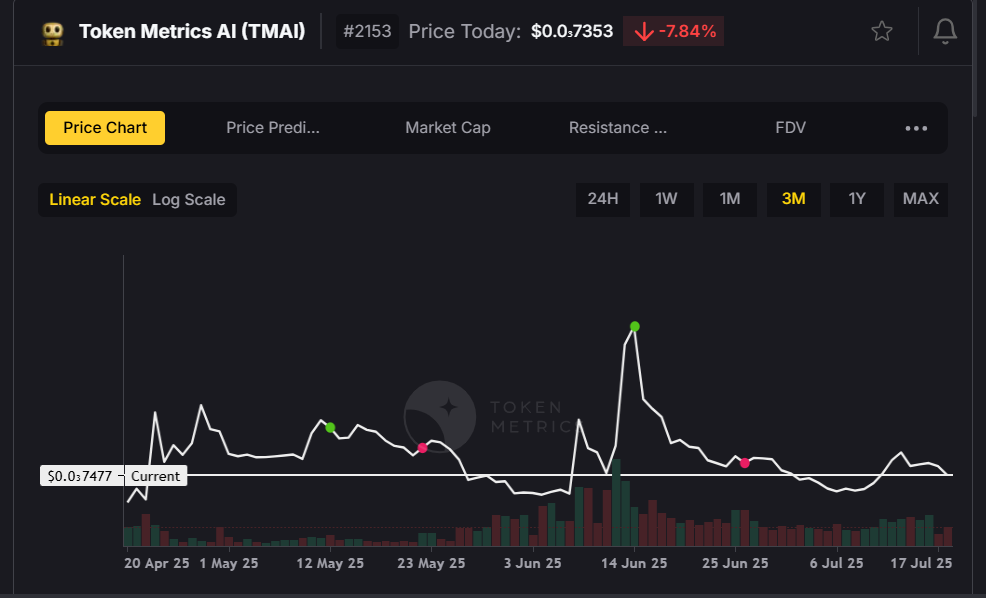
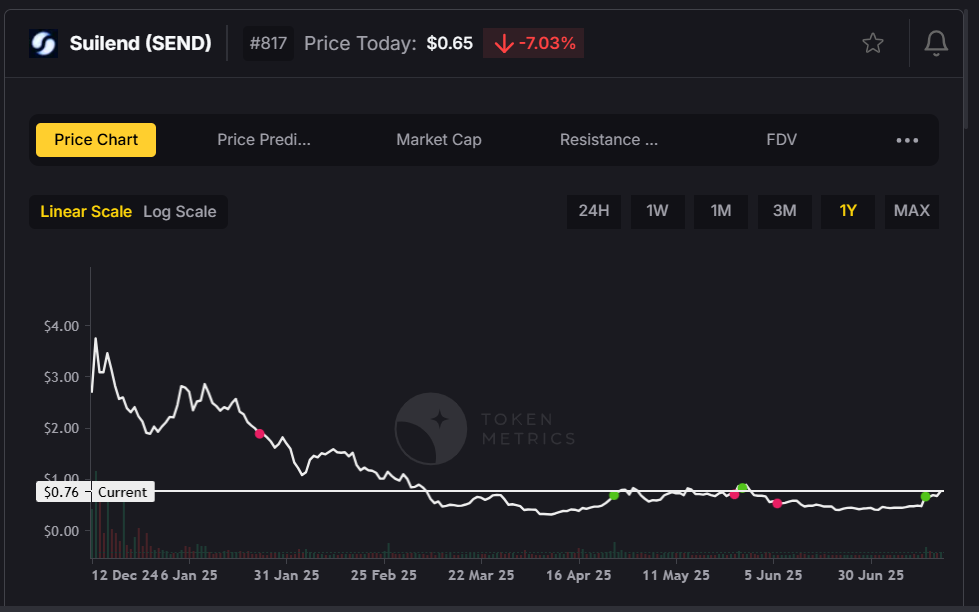

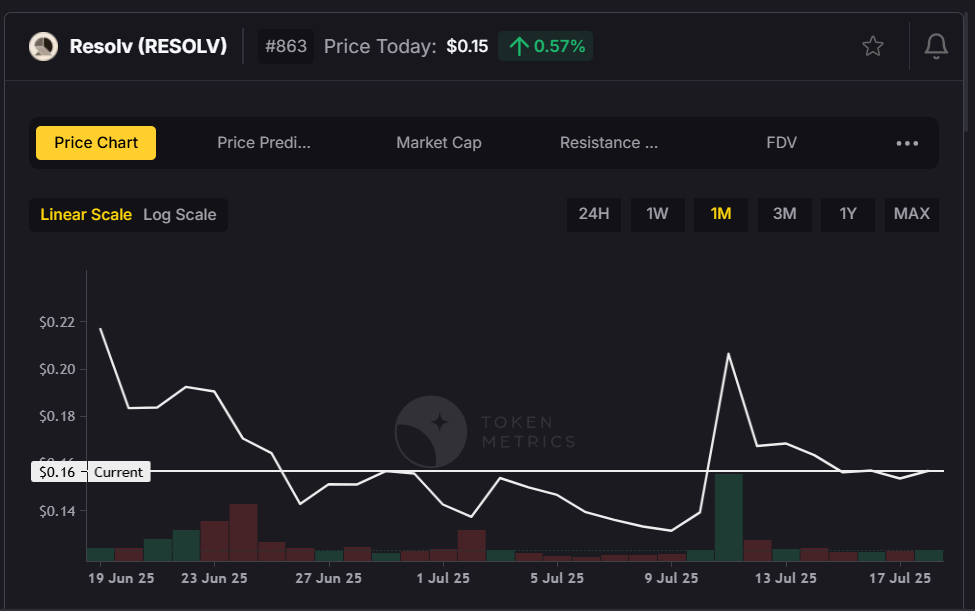
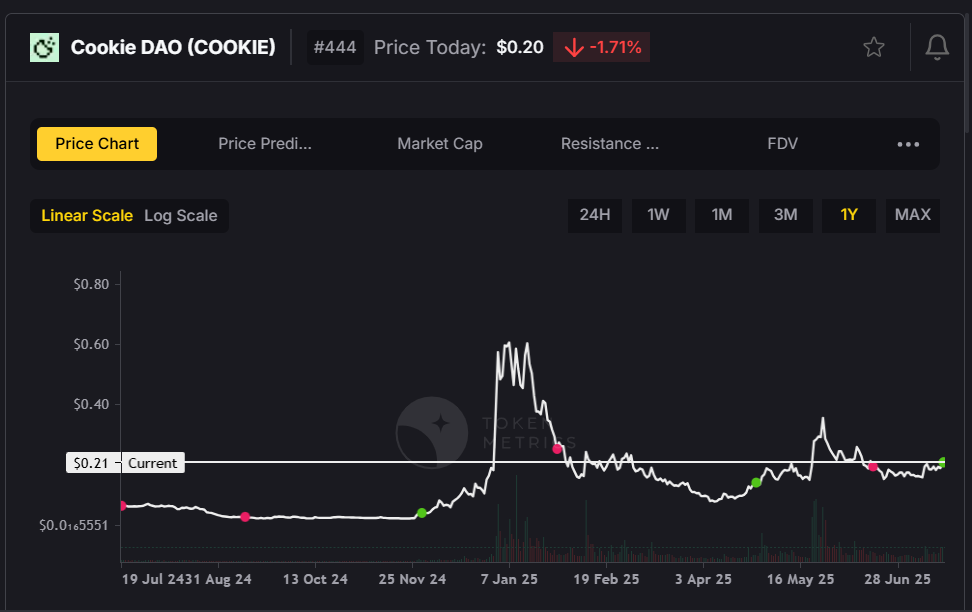
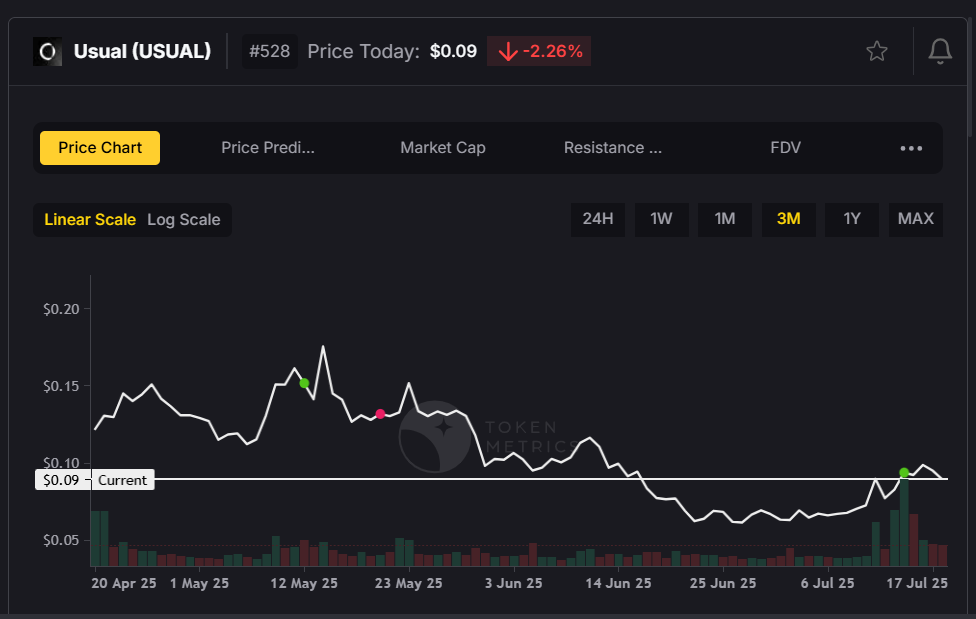
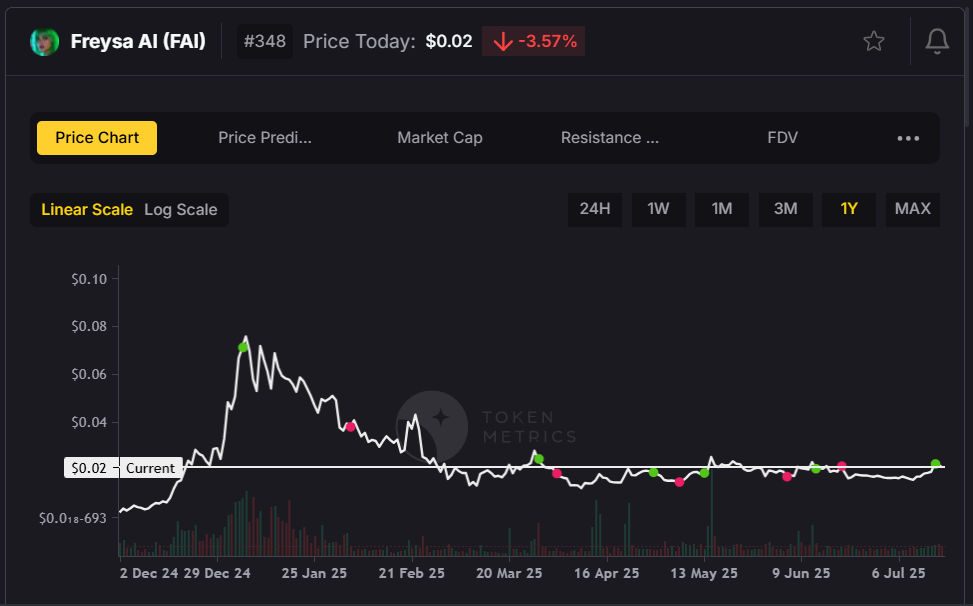
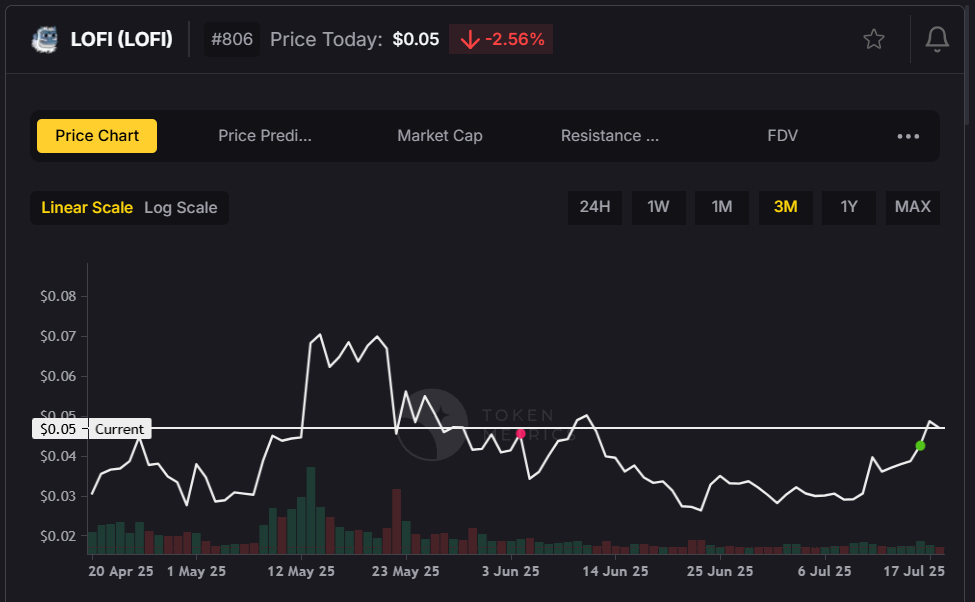
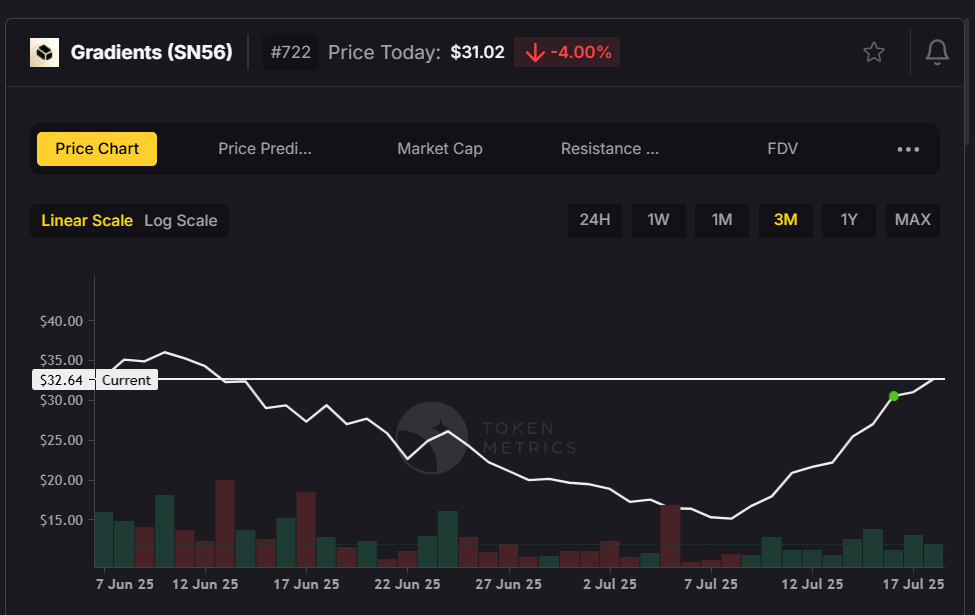
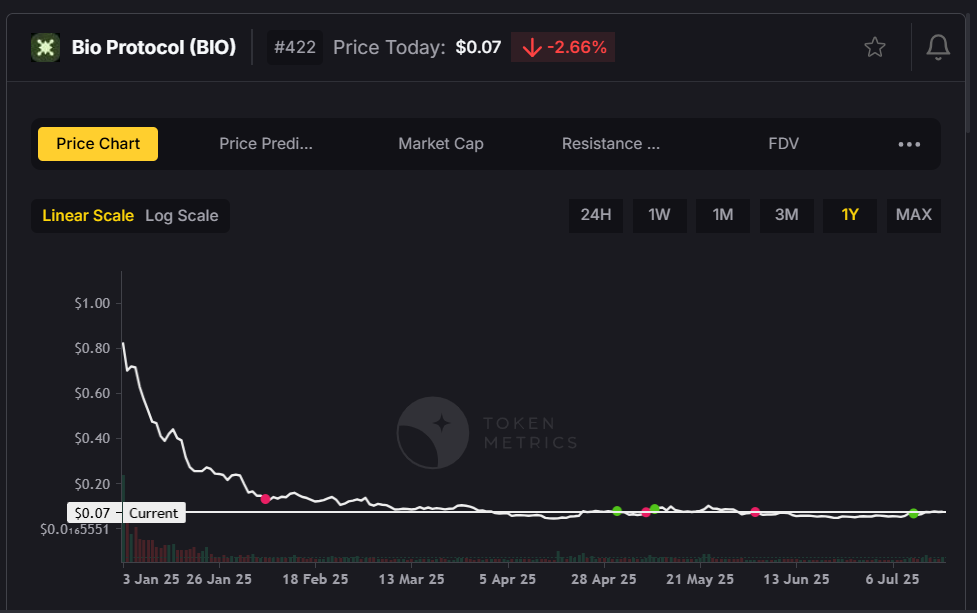
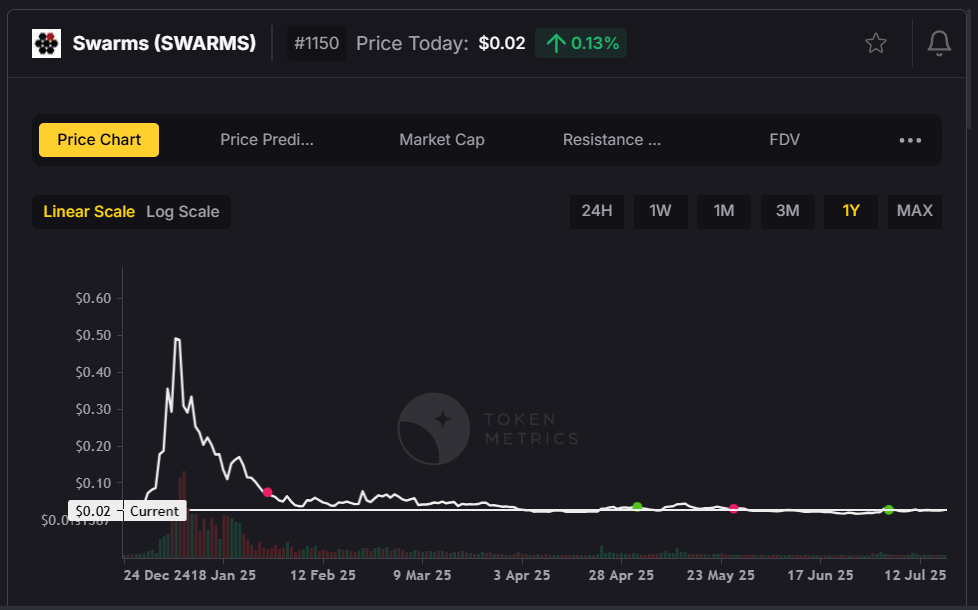
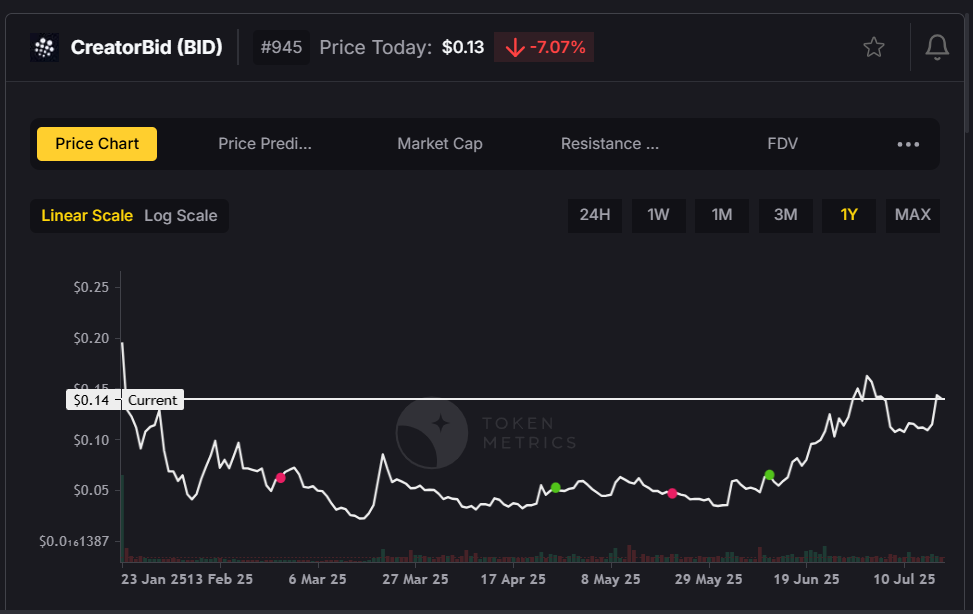
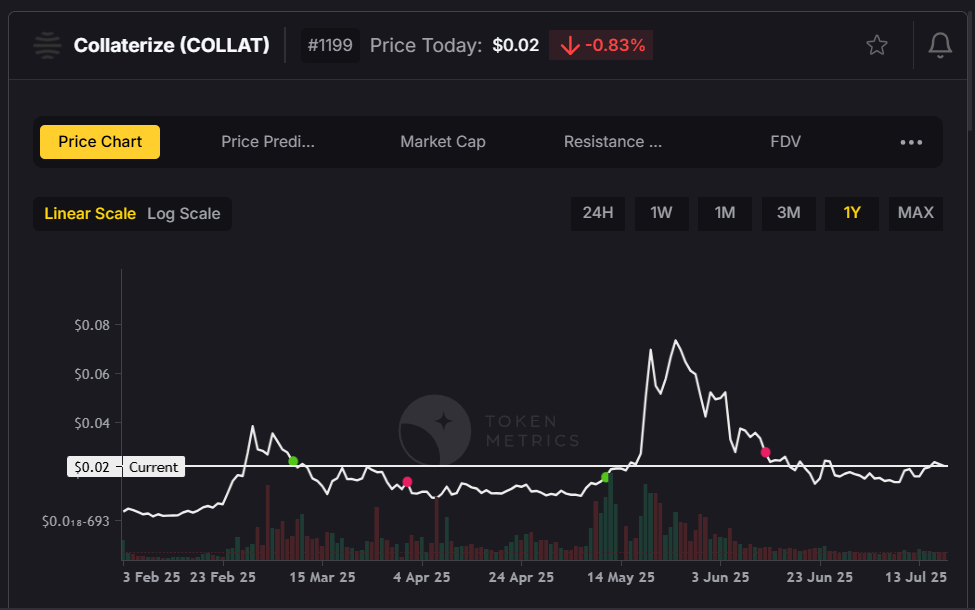
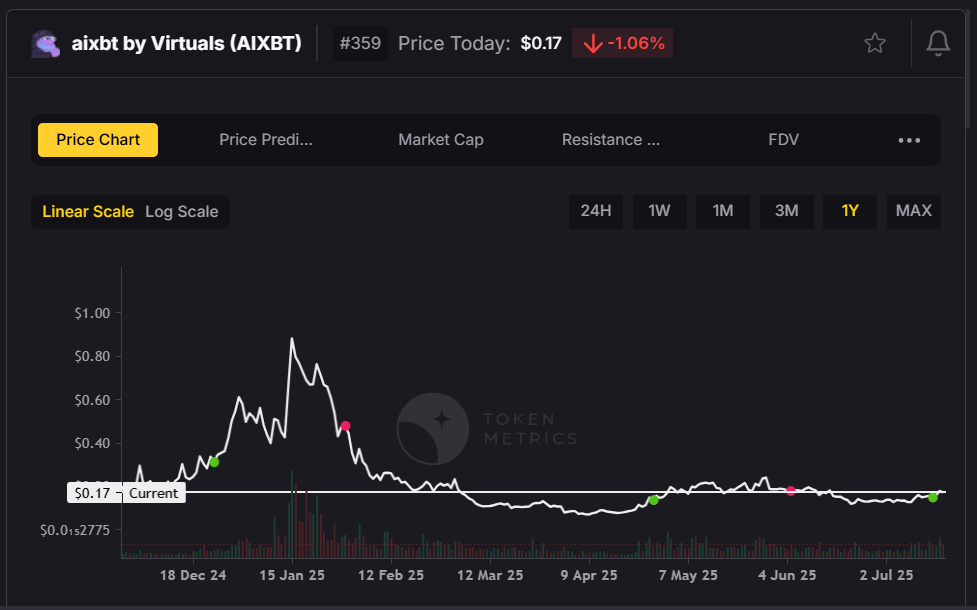




.svg)




.png)